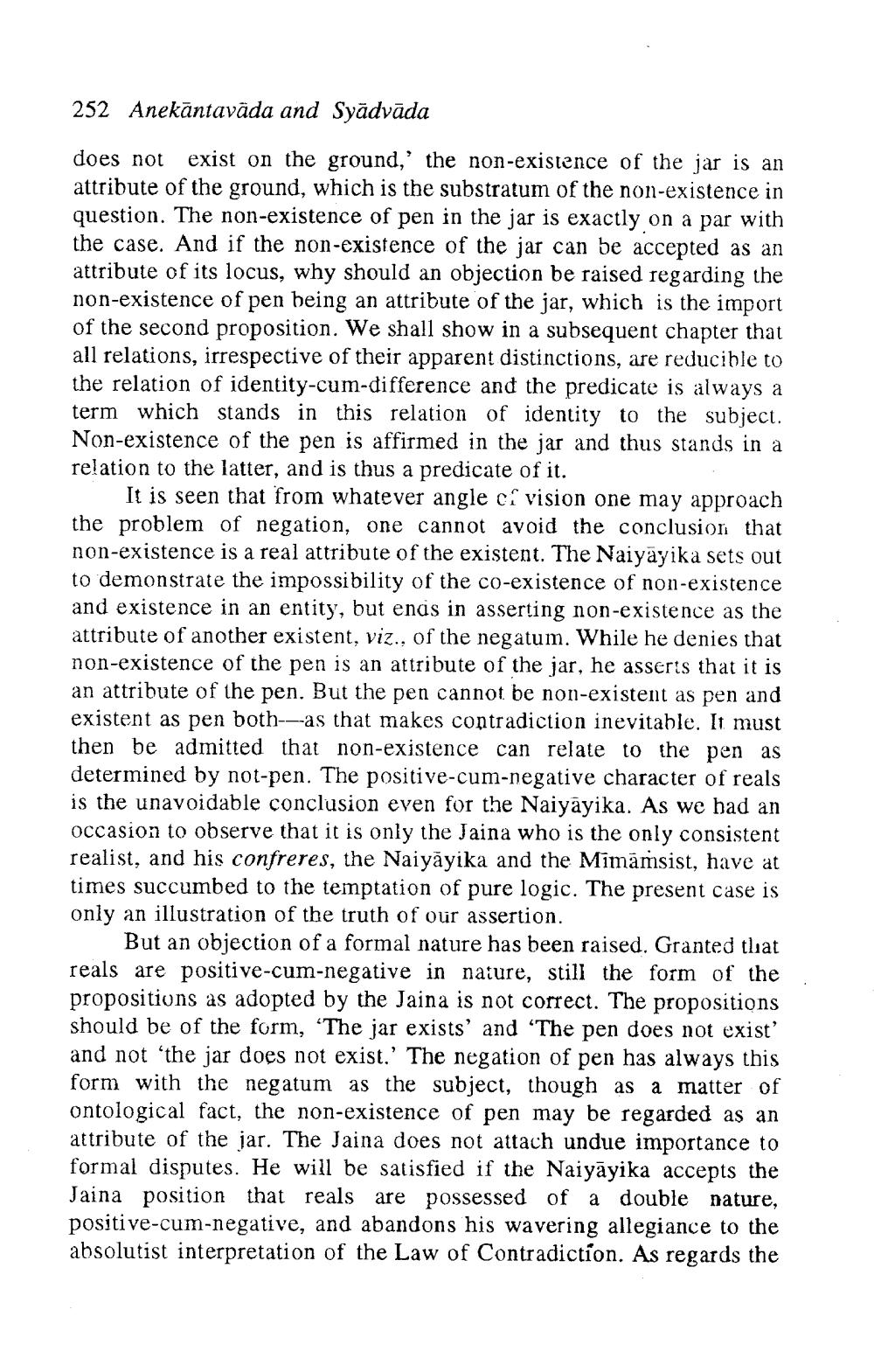________________
252 Anekāntavāda and Syādvāda
does not exist on the ground, the non-existence of the jar is an attribute of the ground, which is the substratum of the non-existence in question. The non-existence of pen in the jar is exactly on a par with the case. And if the non-existence of the jar can be accepted as an attribute of its locus, why should an objection be raised regarding the non-existence of pen being an attribute of the jar, which is the import of the second proposition. We shall show in a subsequent chapter that all relations, irrespective of their apparent distinctions, are reducible to the relation of identity-cum-difference and the predicate is always a term which stands in this relation of identity to the subject. Non-existence of the pen is affirmed in the jar and thus stands in a relation to the latter, and is thus a predicate of it.
It is seen that from whatever angle cî vision one may approach the problem of negation, one cannot avoid the conclusion that non-existence is a real attribute of the existent. The Naiyayika sets out to demonstrate the impossibility of the co-existence of non-existence and existence in an entity, but ends in asserting non-existence as the attribute of another existent, viz., of the negatum. While he denies that non-existence of the pen is an attribute of the jar, he asserts that it is an attribute of the pen. But the pen cannot be non-existent as pen and existent as pen both---as that makes contradiction inevitable. It must then be admitted that non-existence can relate to the pen as determined by not-pen. The positive-cum-negative character of reals is the unavoidable conclusion even for the Naiyāyika. As we had an occasion to observe that it is only the Jaina who is the only consistent realist, and his confreres, the Naiyāyika and the Mimāmsist, have at times succumbed to the temptation of pure logic. The present case is only an illustration of the truth of our assertion.
But an objection of a formal nature has been raised. Granted that reals are positive-cum-negative in nature, still the form of the propositions as adopted by the Jaina is not correct. The propositions should be of the form, “The jar exists' and 'The pen does not exist' and not the jar does not exist.' The negation of pen has always this form with the negatum as the subject, though as a matter of ontological fact, the non-existence of pen may be regarded as an attribute of the jar. The Jaina does not attach undue importance to formal disputes. He will be satisfied if the Naiyāyika accepts the Jaina position that reals are possessed of a double nature, positive-cum-negative, and abandons his wavering allegiance to the absolutist interpretation of the Law of Contradiction. As regards the




